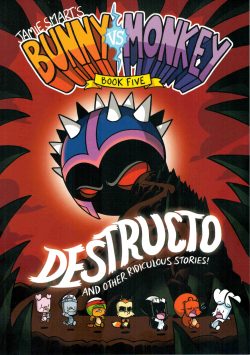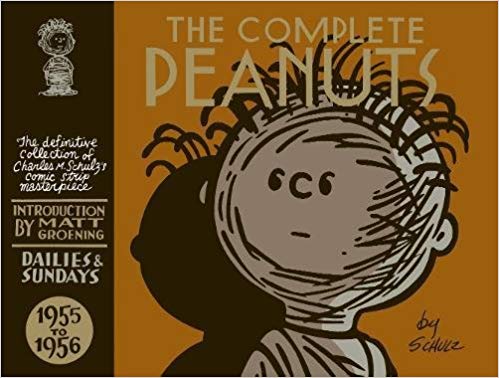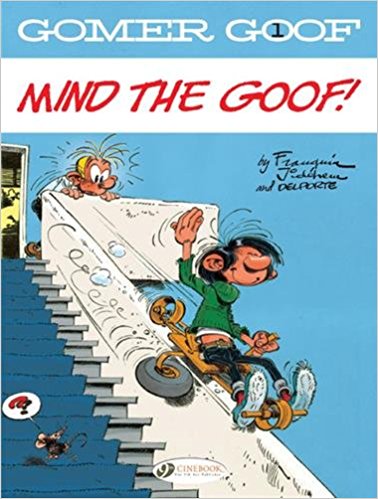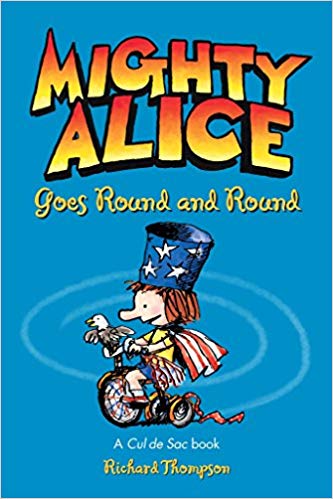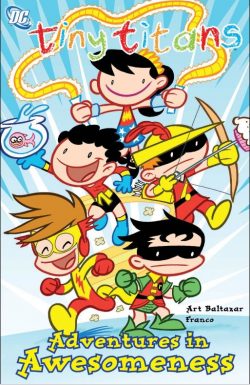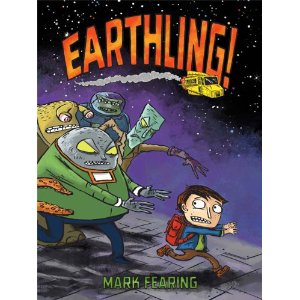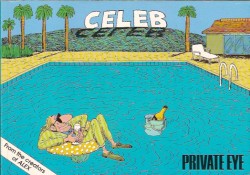
By Lennie Herman, Sid Jacobson, Stan Kay, Bob Bolling, Warren Kremer, Howard Post & various (Marvel)
ISBN: 978-0-7851-4291-1
Once upon a time the American comicbook industry for younger readers was totally dominated by Gold Key with their TV and Disney licenses, and Harvey Comics who had largely switched from general genres to a wholesome, kid-friendly pantheon in the mid-1950s. They totally owned the pre-school sector until declining morals, television cartoon saturation and rising print costs finally forced them to bow out.
Gold Key suffered a slow erosion, gradually losing valuable prime properties like Popeye, Star Trek, assorted Hanna-Barbera and Warner Brothers cartoon stars plus sundry other treasures until parent company Western Publishing called it a day in 1984. Harvey had already shut up shop in 1982 when company founder Alfred Harvey retired.
The latter’s vast archived artwork store was sold off and, with the properties and rights up for grabs, Marvel Comics (who had already secured those lost Star Trek and Hanna-Barbera rights) was frontrunner for licensing the family firm’s iconic characters. These included Richie Rich, Casper the Friendly Ghost, Sad Sack, Hot Stuff – the Little Devil, Wendy the Good Little Witch and many others.
When the bid failed, Editor-in-Chief Jim Shooter, recognising a huge gap in the market, launched a cloned imprint of the Harvey stable (which would also encompass new TV and toy properties such as Jim Henson’s Muppet Babies and Fraggle Rock, Alf, Madballs, Care Bears, Thundercats, Ewoks and such like) to devise the next generation of worthy, wholesome, entry-level comics for entertainment-hungry young minds and their concerned parents.
Marvel’s Star Comics line launched in 1985, edited by ex-Harvey head-honcho Sid Jacobson, with oddly familiar titles and an incontestably similar look and feel – achieved primarily by hiring former Harvey stalwarts such as Jacobson, Lennie Herman, Warren Kremer, Howard Post and others.
Millionaire prince and all-around good kid Royal Roy especially invoked the ire of the Harvey heirs who sued for copyright infringement of their astonishingly prolific Richie Rich: a glittering prize who had shone in more than 55 separate titles between his debut in 1953 and the bust of 1982.
Roy was cancelled after 6 issues – as were many Star series – in a brutal “Survival of the Funnest†publishing policy – and the suit was quietly dropped.
None of which affects the fact that those Eighties child stars were, in their own right, a superb agglomeration of all-ages fun, excitement and adventure joyously revisited in this sturdy digest collection from 2009: gathering that first wave of titles.
Featuring Planet Terry #1-2, Top Dog #1-3, Royal Roy #1-2 and Wally the Wizard #1-2 in a veritable nova of bubbly contagious thrills and frolics, the eccentric escapades open with a star who was just a little lost boy in space…
Planet Terry was created by Lennie Herman (who passed away just before the big Star Comics launch) and the truly magnificent Warren Kremer – whose animation-based art style became the defining look of Harvey Comics during its happy heyday – and starred a young lad searching the universe for the parents he had never known.
Introduced in ‘The Search’ (Herman, Kremer & Vince Colletta), Planet Terry was something of a nuisance, periodically landing on alien worlds, pestering the inhabitants and asking “Has anyone seen my mother and father?â€
Found wandering in a life-pod which raised and educated him, the only clues Terry had to his past is a name bracelet and an empty picture frame…
However, this time when he returns to the obnoxious planet Bznko Terry accidentally drives off a menace which bores folks to death with bad jokes, so the inhabitants give him a junked lady robot as a reward.
This proves to be a blessing in disguise as Robota inadvertently leads the lonely lad to ‘A Clue’ when they all crashland on a mining asteroid and meet aged Enoch Diggs who recognises the life-pod the infant Terry was found in…
‘Some Answers’ are forthcoming as the dithery prospector reveals he once worked on a Confederation Cosmos Cruiser called the Space Warp where the captain’s wife was going to have a baby. Needing a sterile environment for the newborn infant, the crew placed him in the emergency life-boat, but his jubilant father accidentally triggered it whilst celebrating his son’s birth and the baby was rocketed into deep space.
Although they searched everywhere, the heartbroken spacemen never located the pod and assumed baby Terry was lost forever…
Although Enoch can’t remember the names of Terry’s parents he suggests that another old crewman might and the re-energised searchers rush to another asteroid to find him, only to instead encounter ‘The Malt Shop Menace’. Nevertheless, they recruit another voyager when Robota saves the brutish monster Omnus who gratefully joins their decidedly odd family. Little do they know that a sinister conspiracy is at work to keep the whereabouts and secret of the Space Warp lost forever…
Issue #2, by Herman, Kremer & Jon D’Agostino continues the quest as the family of outcasts encounter sabotage and opposition before landing their freshly repaired ship on the lost world of the Gorkels where the trio clumsily fulfil an ancient prophecy in ‘The Saga of Princess Ugly’.
In return for repairing Terry’s downed vessel, he, Robota and Omnus must rescue the abducted Princess by battling hostile jungles, shape-shifting beasts, killer vines, a whirlpool and a volcano – all controlled by arch-villain Vermin the Vile in ‘Too Close (enough) for Comfort’ before saving the girl from ‘The Doom of the Domed City’ and discovering the final resting place of the elusive Space Warp…
Also by Herman, Kremer & D’Agostino, Royal Roy debuted on his birthday in ‘The Mystery of the Missing Crown’ wherein the Prince of wealthy Ruritanian Cashalot discovers that the traditional, venerable Royal Highness Crown has gone missing on the day of his investiture. Whilst King Regal and Queen Regalia understandably panic, super-cool bodyguard Ascot diligently investigates, assorted resplendent relatives dither and interfere, so Roy and his pet crocodile Gummy keep their heads by ‘Picking up the Scent’. They soon expose a supernatural agency at work after ‘A Midnight Visit’ by ghostly ancestor William the Warhorse…
Topping off the first issue was a snappy, snazzy short fun yarn starring the reptilian Gummy in ‘Crocadog’.
‘The Grand Ball’, scripted by Stan Kay, occupied most of Roy’s attention in the second issue as the underage but still eligible Prince took a fancy to simple commoner Crystal Clear whilst ambitious and mean social climber Lorna Loot spent all her time – and considerable cash – unsuccessfully attempting to beguile the boy by turning herself into a modern-day Cinderella in ‘A Strange Stranger’…
‘Maneuvers!’ sees Roy fulfil his hereditary duties by joining the Cashalot army on dawn exercises, but as ruler-in-waiting of a rich and peaceful nation, the plucky lad isn’t too surprised to find that the entire armed forces consisted of one reluctant prince and a keen but aging general…
Top Dog featured a far more contemporary and pedestrian situation, depicting the lives of average American boy Joey Jordan and the mutt he brought home one day.
‘The Dog-Gone Beginning’ by Herman, Kremer & Jacqueline Roettcher revealed how, whilst looking for a lost baseball, the kid had accidentally seen a dog reading the newspaper and talking to himself. Exposed, the canny canine begged the boy to keep his secret else all the four-footed wonder could expect was a short and painful life being poked, prodded and probed by scientists…
When the lad swears to keep his secret, Top Dog agrees to come live with Joey in ‘House About a Dog, Mom?’, and whilst the boy tries to teach the pooch to bark – one of the few languages he can’t speak! – his accommodating family gradually get used to the seemingly normal dog and his boy.
However, when Mervin Megabucks – the richest and meanest kid in town – overhears the pair playing and conversing, the spoiled brat refuses to believe Joey is a ventriloquist. When the junior Jordan refuses to sell, Mervin steals Top Dog as the perfect addition to his palatial high-tech house.
Even torture won’t make the purloined pooch speak again however, and when Joey stages ‘The Big Breakout’ Mervin’s mega-robots prove no match for dogged determination and the plutocrat brat is left baffled, bamboozled and dog-less…
Issue #2 exposed ‘Spies!’ when the restless dog of a thousand talents appears to harbour a dark side. Going out on nightly jaunts, the marvellous mutt seemingly leads a double life as a security guard in a Defence Plant, triple-crossing everybody by photographing military secrets for a foreign power.
Of course, it is actually a diminutive enemy agent in a dog suit but Vladimir‘s handlers hadn’t reckoned on a real dog looking – and speaking – just like their hairy operative. Thus they accidentally give their purloined plans to the chatty all-American canine…
After spectacularly trapping the sinister spies – without revealing his own astounding intellect – Top Dog is framed in #3 by Joey’s best friend Larry who is feeling rejected and neglected since the Brilliant Bow-wow moved in.
With a feral hound dubbed ‘The Mad Biter’ on the prowl and attacking people, it’s simple to send the perspicacious pup to the Pound, where he encounters lots of bad dogs who probably deserve to be ‘Caged’.
However, faithful Joey never gives up and after bailing his canine comrade out, the pair convince the guilt-ridden perjurer to see the light by treating him to an impromptu midnight ‘Ghost Story’…
Even with Larry recanting his lies the neighbourhood families don’t trust Top Dog, but that all changes once the maligned mutt tracks down the real Biter and engages him in ‘A Fight to the Finish’…
The final initial entry was written and illustrated by veteran Archie Comics artist Bob Bolling (probably most famous for creating and producing the first eight years’ worth of the award-winning Little Archie spin-off series), who concocted a fabulous medieval wonderland for Wally the Wizard to play in.
In #1’s ‘A Plague of Locusts’ mystical Merlin’s older, smarter brother Marlin is having trouble with his stubbornly inquisitive apprentice. Wally wants to know everything now, has no discipline and is full of foolish ideas and misconceptions. As a serious scientist, Marlin has no time for silly superstitions so after the lad accidentally releases a time-travelling demon from an age-old prison the mage refuses to believe him.
Gorg however swears faithfully to repay the favour before disappearing…
Despatched to deliver a potion to King Kodger, Wally also helps a dragon save his hatchling from a deep well, only just reaches the sovereign in time and has a feed on the Royal Barge where he once again fails to impress beauteous Princess Penelope…
Meanwhile in distant Bloodmire Castle, wicked plotters Vastar the Vile, his sister Sybilious the Bilious and wicked warlock Erasmo are conspiring to conquer the kingdom by unleashing a gigantic metal locust to consume all in its path…
Even the noble knights led by invincible Sir Flauntaroy are helpless before the brazen beast and Wally realises only Marlin can save them. Unfortunately, the boy gets lost on route to fetch him, but happily for everybody the dragon and demon which the rationalist sorcerer refuses to believe in are ready to pay their debts to the apprentice…
Sid Jacobson, Howard Post & Jon D’Agostino took over for the second issue as Wally enters the annual apprentice’s games with Marlin now suddenly transformed into a traditional magic-making mage. In fact, Marlin, as a three-time champion of ‘The Magic-a-Thon!’ is secretly regretful that Wally is too inexperienced to compete, a fact his disciple discerns and tries to fix…
Desperately cramming for a week and eventually – with the coaching of his proud master -Wally sets off to compete but a lovelorn barbarian accidentally cleaves the kid’s crib notes in twain, leaving the lad able to create only half-spells and materialise semi-monsters…
Undaunted Wally continues and – even after a huge storm deprives him of the demi-directions and his back-up pouch of herbs and potions – perseveres, determined to win using nothing but his wits, guts and unflagging optimism…
This clutch of classic children’s tales also includes the enchanting covers and the original house-ads which introduced the characters to the Kids in America and more than three decades later is still a fabulous blast of intoxicating wonder and entertainment readers of all ages cannot fail to love…
With contemporary children’s comics on the rise again after too long a fallow period, it’s still sensible and fun to acknowledge the timeless classics we used to draw upon and which drew kids in. Historical compilations like this one belong on the shelves of every funnybook-loving parent and even those lonely couples with only a confirmed twinkle in their eyes…
© 1985 and 2009 Marvel Characters, Inc. All rights reserved.



